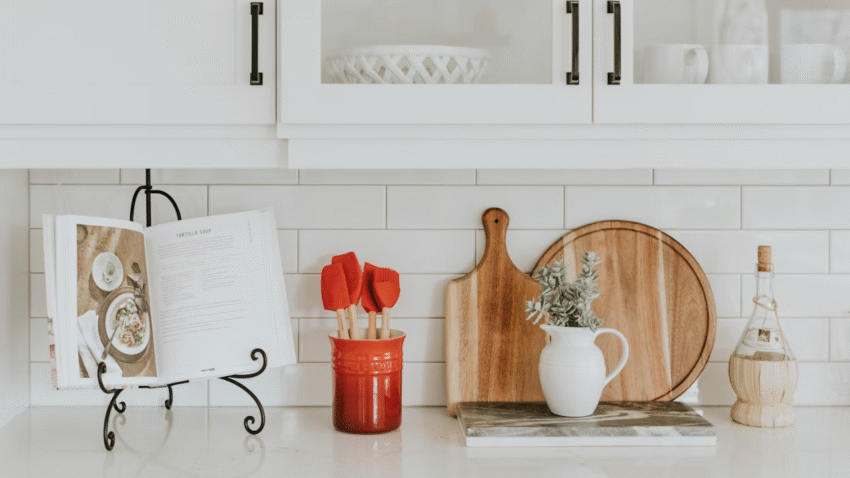Introduction
A cluttered pantry can turn meal prep into a frustrating hunt for ingredients you know you bought but can’t find. In this complete guide, you’ll learn how to organize your kitchen pantry step by step, so it stays tidy, efficient, and easy to navigate. If you’re tired of expired cans, duplicate spices, or wasting time rummaging through crowded shelves, it’s time to take control of your pantry space once and for all.
Why Organizing Your Pantry Matters in the Kitchen
Your pantry isn’t just a storage space—it’s the foundation of your cooking workflow. A well-organized pantry:
- Saves time during meal prep and grocery shopping
- Prevents food waste by keeping items visible and accessible
- Makes cooking more enjoyable and less stressful
- Improves kitchen aesthetics, especially if your pantry has open shelves
- Helps maintain dietary goals by making healthy ingredients easier to grab
Whether you cook daily or a few times a week, a clean and logical pantry layout streamlines your entire kitchen experience.
Step-by-Step Guide to Organizing Your Kitchen Pantry
Follow these simple steps to create a system that works—and lasts.
1. Empty the Entire Pantry
Start fresh by removing everything from your pantry shelves. Lay it all out on a table or counter so you can see what you’re working with.
Kitchen Tip: Use this moment to wipe down all shelves with a gentle cleaner and let them dry completely.
2. Sort and Categorize Your Items
Group similar items together. Common categories include:
- Canned goods
- Grains and pasta
- Baking supplies
- Breakfast items (cereal, oats)
- Snacks
- Condiments and sauces
- Spices
- Oils and vinegars
- Beverages
- Backstock or overflow
Pro Tip: Create subcategories if needed—for example, divide snacks into sweet and savory, or baking into flours, sugars, and add-ins.
3. Check Expiration Dates and Declutter
As you sort, check dates and condition:
- Toss anything expired or stale
- Donate unopened, unexpired items you won’t use
- Recycle or repurpose containers when possible
This step is key to reducing clutter and making space for what truly belongs.
4. Choose the Right Storage Containers
Clear, stackable containers create a uniform look and help you see when items are running low. Use a mix of:
- Airtight jars for flour, sugar, grains, and cereals
- Baskets or bins for snacks or loose packets
- Lazy Susans for oils, sauces, and vinegars
- Tiered shelf organizers for canned goods
- Label makers or stickers to clearly mark contents
Reminder: Don’t overbuy containers until you know exactly what your categories need.
5. Plan Your Shelf Layout Strategically
Think of your pantry like real estate—prime space goes to what you use most.
- Eye level: Daily-use items (snacks, breakfast, lunch ingredients)
- Upper shelves: Backstock, bulk items, special-occasion supplies
- Lower shelves: Heavy or large items like bottled water, pet food, or small appliances
- Door racks or hanging shelves: Great for spices, seasoning packets, or foil and wraps
Adjust shelf heights if possible to maximize vertical space and minimize stacking.
6. Label Everything
Clear labeling is a game-changer. Use labels on:
- Jars and containers
- Bins and baskets
- Shelves (optional, but helpful for shared kitchens)
This keeps your system sustainable and easy for others in your household to follow.
Tip: Include expiration dates on bulk containers with a piece of tape or a removable sticker.
7. Create a Restock Routine
Even the best system falls apart without maintenance. Add a “pantry check” to your weekly or bi-weekly routine:
- Scan for low stock
- Check dates
- Refill jars and bins
- Wipe down spills
Kitchen Hack: Keep a notepad or magnetic grocery list inside the pantry to jot down items as they run low.
Common Mistakes to Avoid
Organizing your pantry isn’t hard, but it’s easy to fall into bad habits. Watch out for these common errors:
Mistake 1: Overstuffing the Shelves
Solution: Leave some breathing room. Overcrowding leads to forgotten items and disorganization.
Mistake 2: Ignoring Vertical Space
Solution: Use shelf risers or stackable bins to fully utilize your space from top to bottom.
Mistake 3: Skipping Labels
Solution: Labels prevent mystery containers and make restocking fast. Don’t rely on memory—label everything.
Mistake 4: Buying Containers Before Planning
Solution: Sort and measure your categories first. Buy only what you need to avoid wasting space or money.
Mistake 5: Forgetting to Maintain the System
Solution: Set a quick 10-minute weekly habit to keep things tidy. Prevention is easier than a full reorganization later.
Extra Tips & Kitchen Hacks
Once your pantry is organized, you can elevate it even further:
1. Use Clear Containers for Kids’ Snacks
Create a “grab and go” bin at a child-friendly height with healthy snacks in clear containers or baggies.
2. Add Chalkboard Paint or Whiteboard Inside the Door
Track what you’re running low on or write meal plans right on the door for quick reference.
3. Keep a First-In, First-Out Rule
Place new groceries behind older ones so nothing gets lost or expired. This is especially helpful for canned goods and boxed foods.
Related task to check next: [How to Organize Your Refrigerator for Freshness & Space]
Conclusion
A well-organized kitchen pantry turns chaos into clarity. With clear zones, labeled containers, and a system that fits your routine, you’ll spend less time hunting for ingredients and more time enjoying your cooking.
Let’s recap:
- Empty and clean everything
- Sort into categories
- Choose smart containers and shelf layouts
- Label for ease and consistency
- Maintain with a simple restock routine
✅ Bookmark this guide and transform your pantry into a clean, efficient hub of your kitchen—once and for all!
